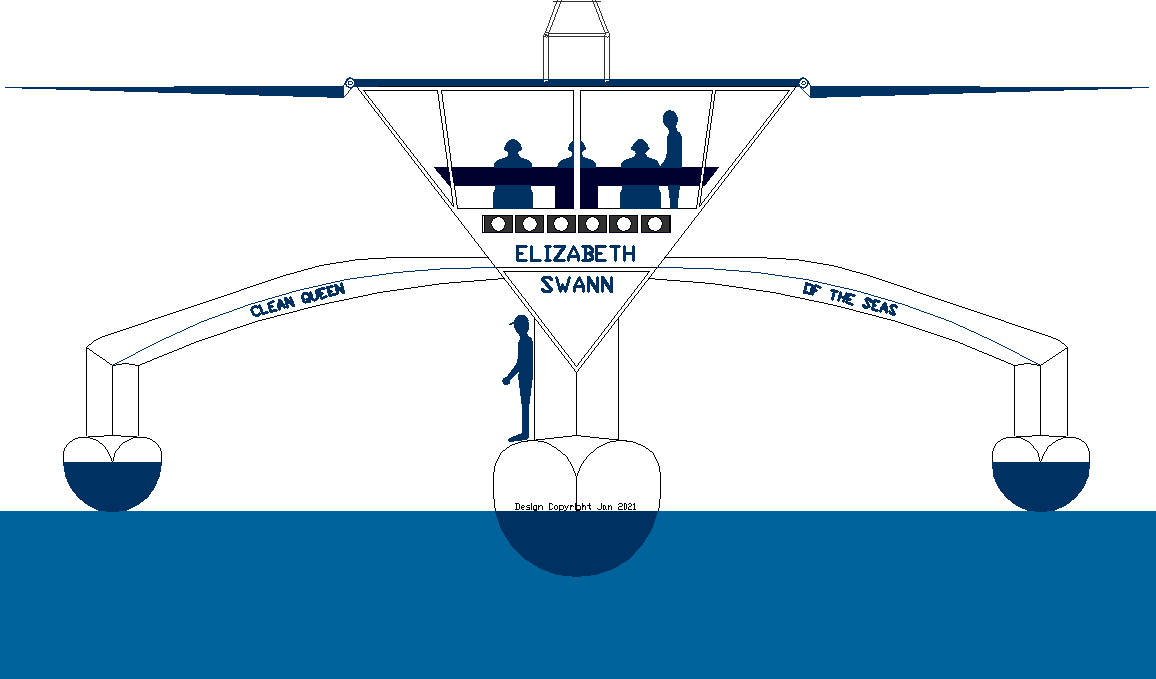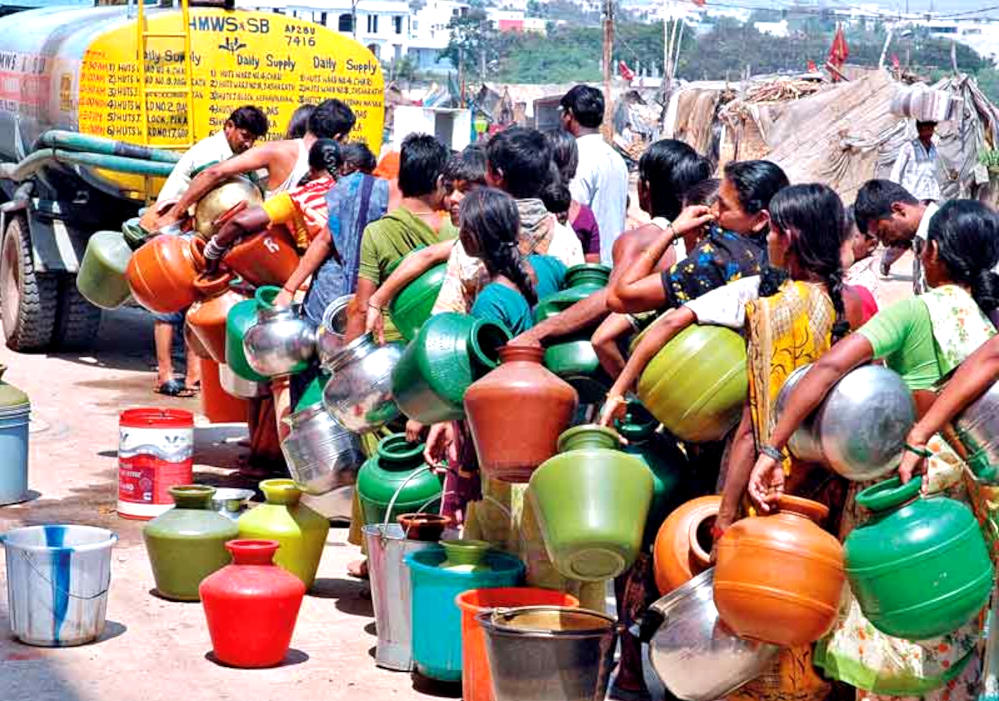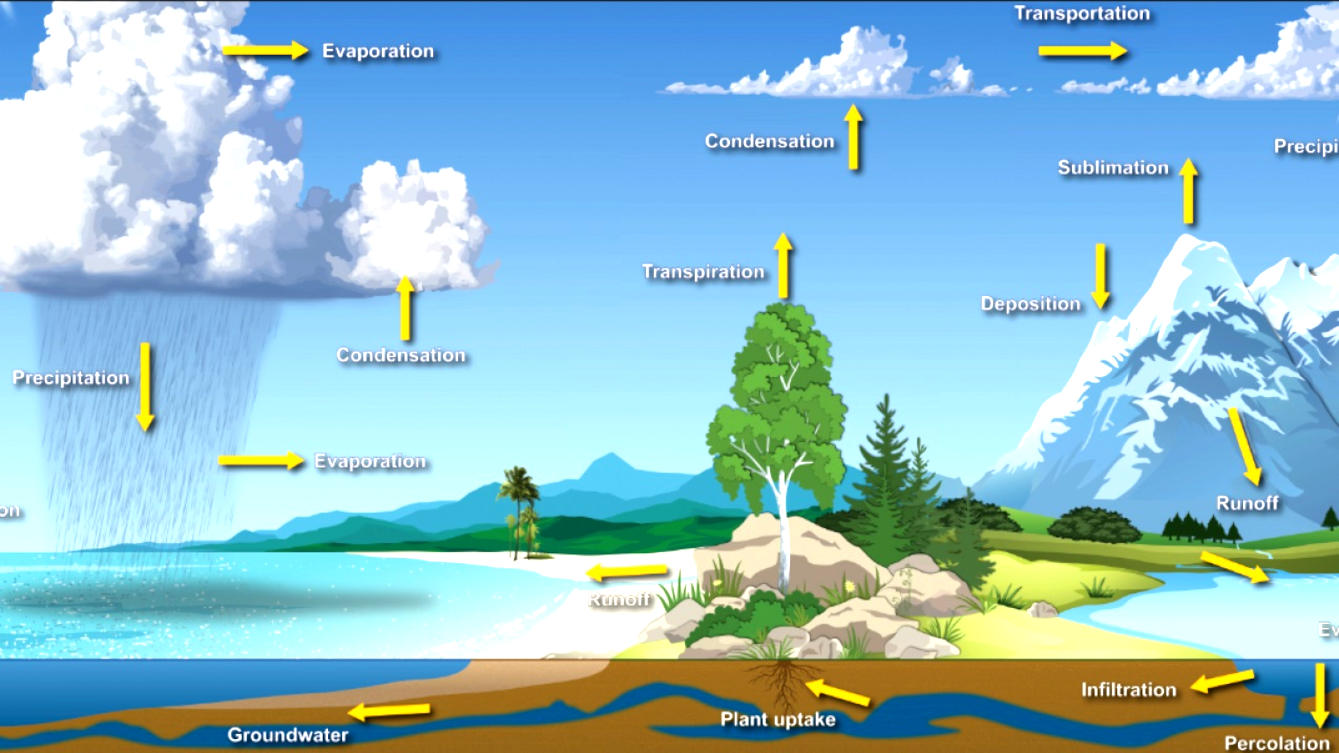|
H2O - WATER
Please use our A-Z INDEX to navigate this site or return HOME
|
|
FLOTATION & DISPLACEMENT - Water is the staff of life, without which humans could not survive on planet earth. Seawater covers roughly 70% of the earth's surface, but is not drinkable, being saturated with salt.
H2O is a clear liquid that we take for granted, that falls from the sky to water our plants and trees. We sometimes think of it as a nuisance, where our houses and factories need roofs to keep us warm and dry.
But we crave it to quench our thirst. Why?
Because the human body is mostly water. According to H.H. Mitchell, Journal of Biological Chemistry, the brain and heart are composed of 73% water, the lungs are about 83% water, skin contains 64% water, muscles and kidneys are 79%, and even the bones are around 31% water.
No wonder we need it. We all need a reliable water supply for life.
Water is held to be the most powerful solvent on planet earth, explaining why the sea is saturated with salt.
Fresh water weighs 62lbs per cubic foot (in old money). Seawater weights 64lbs per cubic foot. Two pounds is therefore dissolved salts and minerals.
We can separate water into hydrogen and oxygen via electrolysis, using electrolyzers, to make a gas that is useful for renewable energy supplies. When recombined in a fuel cell, we get our fresh water back, fully recycled.
NOTE - Spare a thought for our precious H2O supplies. Please don't contaminate or waste valuable drinking water.
Fresh
water weighs about 1000 kilograms per cubic meter and seawater weighs about 1.026 times that, we say that the typical seawater density is 1026 kg/m3.
WATER, WATER EVERYWHERE, BUT NOT A DROP TO DRINK
Although the earth is covered by oceans and seas totaling over 70% of the surface of our blue planet, only 1% is drinkable (potable) water.
WATER TANKERS - In some geographical regions, water is more valuable than petrol. All the money in the world, is no use to you if your are dead from dehydration.
Rivers are also useful waterways for transporting goods and passengers.
For travel, ships are relatively slow, but ferries are practical and cruises are popular, though at the moment very polluting. The aim of the IMO is to green shipping, to achieve zero emissions by 2050.
At the moment we have a very confusing situation, where, although fleet operators are keen to transition from particulate/carcinogenic laden diesel and LNG bunker fuels, to renewable energy, there is no cut and dried solution. With many different systems up for development, to include:
1. Hydrogen gas in compressed form H2 2. Hydrogen gas in liquid form LH2 3. Methanol CH3OH 4. Ammonia NH3
The Cleaner Ocean Foundation (COF) is keen to explore the possibilities, with a view to equaling the diesel powered circumnavigation record set by the Cable and Wireless Adventurer - and eventually take of the formula one sailing multi-hulls that have competed for the Jules Verne (sailing) Trophy. Thus, proving the viability of energy from nature systems - as are not yet fully developed - for commercial transport. The technology is there for the asking.
RISING SEA LEVELS - The melting on arctic ice caused by global warming, is raising sea levels, causing many islanders to be homeless. All United Nations members know that use of coal and oil fossil fuels is the root cause of climate change, but so far, such ecocidal mechanisms have not been outlawed under the Rome Statute. For those affected by flooding, there is too much water, but all of it unfit for drinking.
WATER CYCLE
The water cycle is often taught as a simple circular cycle of evaporation, condensation, and precipitation. Although this can be a useful model, the reality is much more complicated. The paths and influences of water through Earth’s ecosystems are extremely complex and, even today, not completely understood. COF is striving to expand understanding of the water cycle at global and local scales to help others forecast weather, climate, water resources, and ecosystem health.
Earth is truly unique in its abundance of water. Water is necessary to sustaining
life on Earth, and helps tie together the Earth's lands, oceans, and atmosphere into an integrated system. Precipitation, evaporation, freezing and melting and condensation are all part of the hydrological cycle - a never-ending global process of water circulation from clouds to land, to the ocean, and back to the clouds. This cycling of water is intimately linked with energy exchanges among the atmosphere, ocean, and land that determine the Earth's climate and cause much of natural climate variability. The impacts of climate change and variability on the quality of human life occur primarily through changes in the water cycle. As stated in the National Research Council's report on Research Pathways for the Next Decade (NRC, 1999):
"Water is at the heart of both the causes and effects of climate change."
CLIMATE CHANGE
Water influences the intensity of climate variability and change. It is the key part of extreme events such as drought and floods. Its abundance and timely delivery are critical for meeting the needs of society and ecosystems.
REFERENCES
..
|
|
ZEWT ALORS - The solar and wind powered 'Elizabeth Swann' will feature solar collectors and wind energy harvesting apparatus in an advanced configuration. Her hull configuration is ideal for mass hydrogen storage tanks, offering ranges of up to 4,000nm.
|
|
A central wave piercing hull stabilized by outriggers as a trimaran including:
a) Ultra light superstructure purposed designed to harvest energy from nature via b) and c) below,
b) Solar wings that track the sun and fold for storms, in concert with
c) A turbine generator on a mast that tracks wind conditions and furls for storms.
The theoretical displacement we are working towards is: 30,000 - 45,000 kilograms (target) in 5083 marine grade alloy.
A-Z
INDEX OF H2 POWERED FUEL
CELL SHIPS
A-Z FERRY OPERATORS & ISLAND SERVICES
DFDS -
LINKS & REFERENCE
http://
|
|
Please use our A-Z INDEX to navigate this site or return HOME
This website is Copyright © 2022 Jameson Hunter Ltd
|



